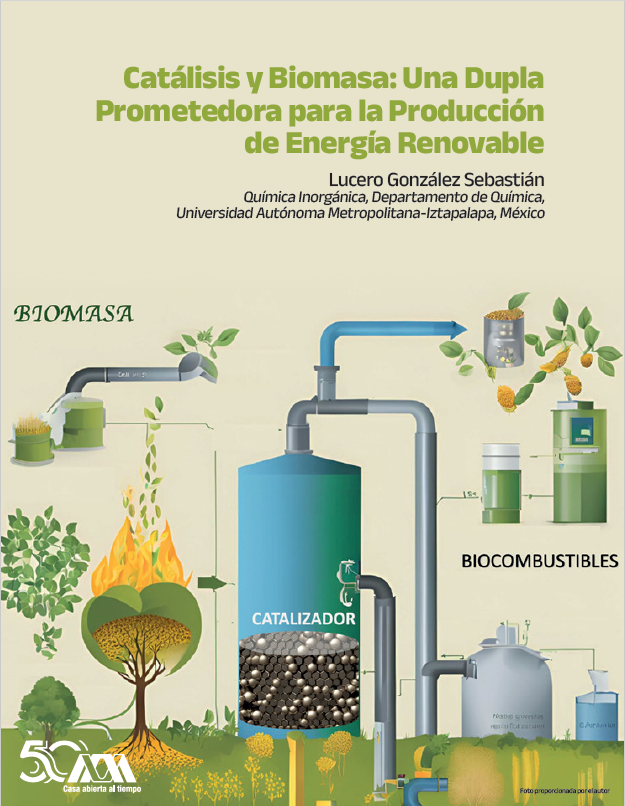Catálisis y Biomasa
Una Dupla Prometedora para la Producción de Energía Renovable
Abstract
Biomass comprises organic materials such as agricultural, forestry, and food waste, making it a valuable source of renewable energy due to its abundance and regenerative capacity. The catalytic activation of biomass represents a promising pathway to generate renewable energy and contribute to climate change mitigation and sustainable development. However, efficiently converting biomass into usable energy poses challenges due to its complex structure. Typically, biomass activation requires catalysts to facilitate its degradation and transformation into useful products, such as biofuels and high-value-added chemicals. The main function of these catalysts is to accelerate reaction rates, reduce required temperatures and pressures, and enhance reaction selectivity. Research in this field focuses on developing catalysts that are more active, selective, and stable, thereby utilizing biomass as a renewable resource and advancing towards a more sustainable economy.
Downloads
References
Eppinger, J., & Huang, K.-W., Formic Acid as a Hydrogen Energy Carrier. ACS Energy Lett., 2(1), 188–195, 2017. https://doi. org/10.1021/acsenergylett.6b00574
Hayes, D. J., An examination of biorefining processes, catalysts and challenges. Catal. Today, 145(1), 138–151, 2009. https:// doi.org/https://doi.org/10.1016/j.cattod. 2008.04.017
Hijazi, A., Khalaf, N., Kwapinski, W., & Leahy, J. J., Catalytic valorisation of biomass levulinic acid into gamma valerolactone using formic acid as a H2 donor: a critical review. RSC Advances, 12(22), 13673–13694, 2022. https://doi. org/10.1039/D2RA01379G
Lin, L., Han, X., Han, B., & Yang, S., Emerging heterogeneous catalysts for biomass conversion: studies of the reaction mechanism. Chem. Soc. Rev., 50(20), 11270– 11292, 2021. https://doi.org/10.1039/ D1CS00039J
Rose, M., & Palkovits, R., Cellulose-Based Sustainable Polymers: State of the Art and Future Trends. Macromol. Rapid Commun., 32(17), 1299–1311, 2011. https://doi.org/https://doi.org/10.1002/ marc.201100230
Valentini, F., Kozell, V., Petrucci, C., Marrocchi, A., Gu, Y., Gelman, D., & Vaccaro, L., Formic acid a biomass-derived source of energy and hydrogen for biomass upgrading. Energy Environ. Sci., 12(9), 2646–2664, 2019. https://doi.org/10.1039/ C9EE01747J
Wang, K., Horlyck, J., An, N., & Voutchkova- Kostal, A., Homogeneous vs. heterogeneous catalysts for acceptorless dehydrogenation of biomass-derived glycerol and ethanol towards circular chemistry. Green Chem., 26(7), 3546–3564, 2024. https:// doi.org/10.1039/D3GC04378A
Wright, W. R. H., & Palkovits, R., Development of Heterogeneous Catalysts for the Conversion of Levulinic Acid to γ-Valerolactone. ChemSusChem, 5(9), 1657– 1667, 2012. https://doi.org/https://doi. org/10.1002/cssc.201200111
Yang, Y., Sun, Y., & Luo, X., The Relationship between Structure and Catalytic Activity-Stability of Non-Precious Metal- Based Catalysts towards Levulinic Acid Hydrogenation to γ-Valerolactone: A Review. Energies, 15(21), 8093, 2022. https:// doi.org/10.3390/en15218093






